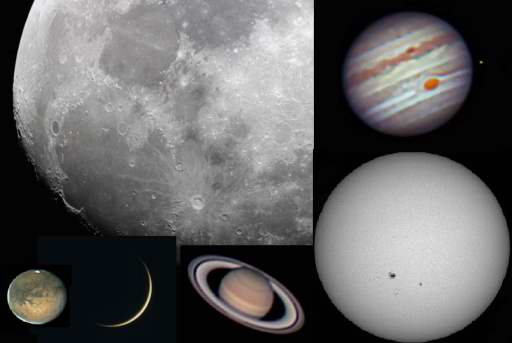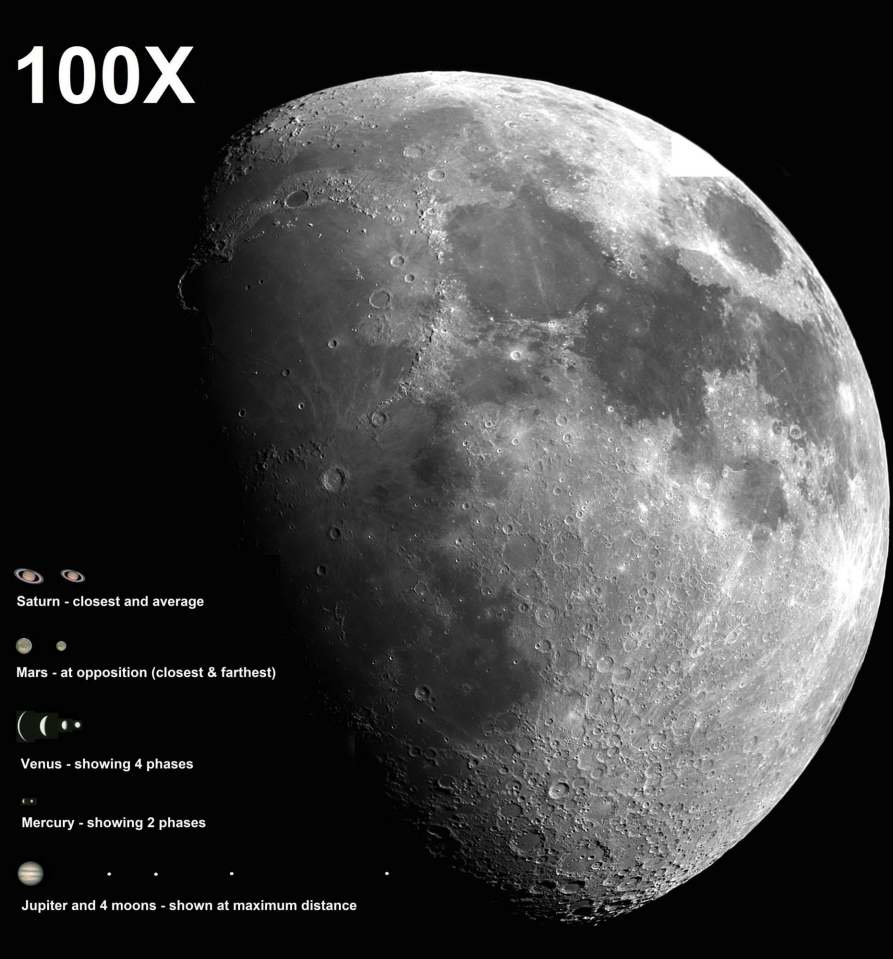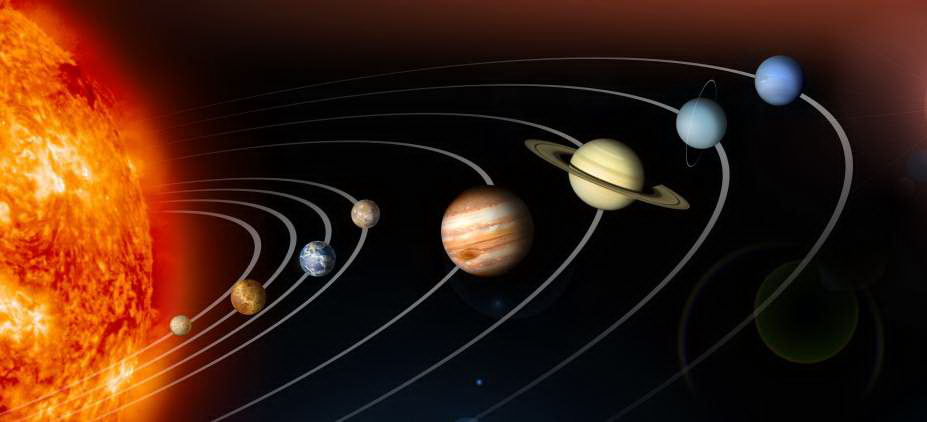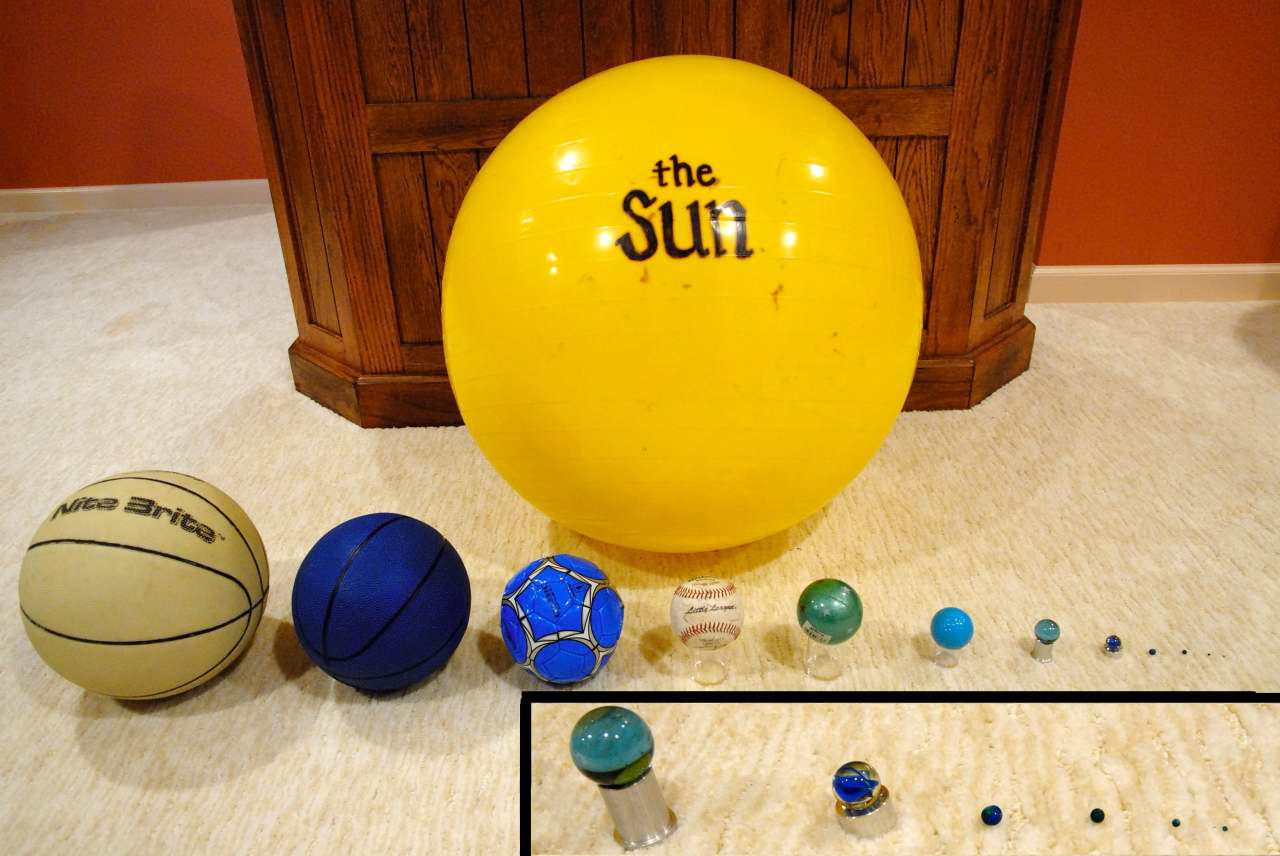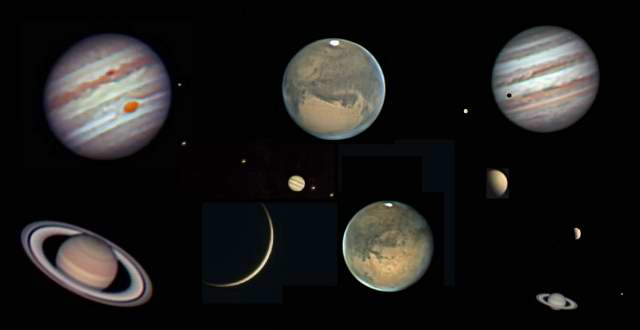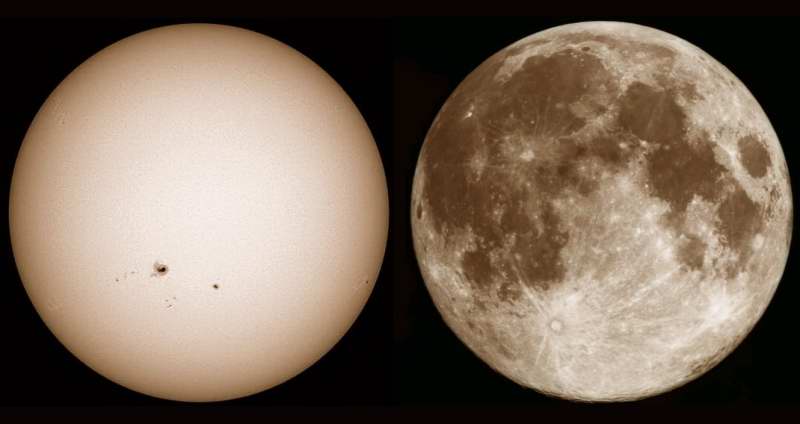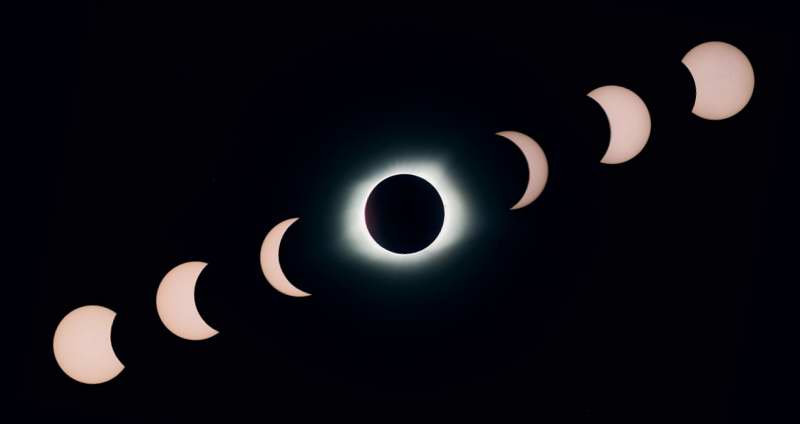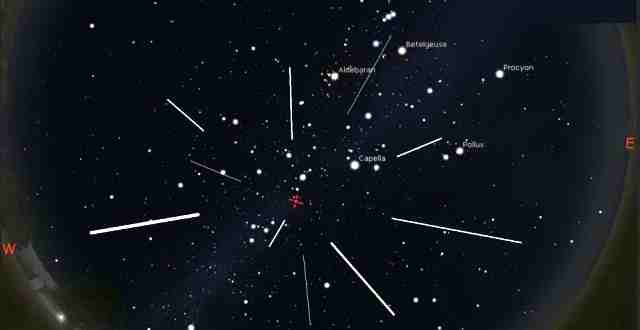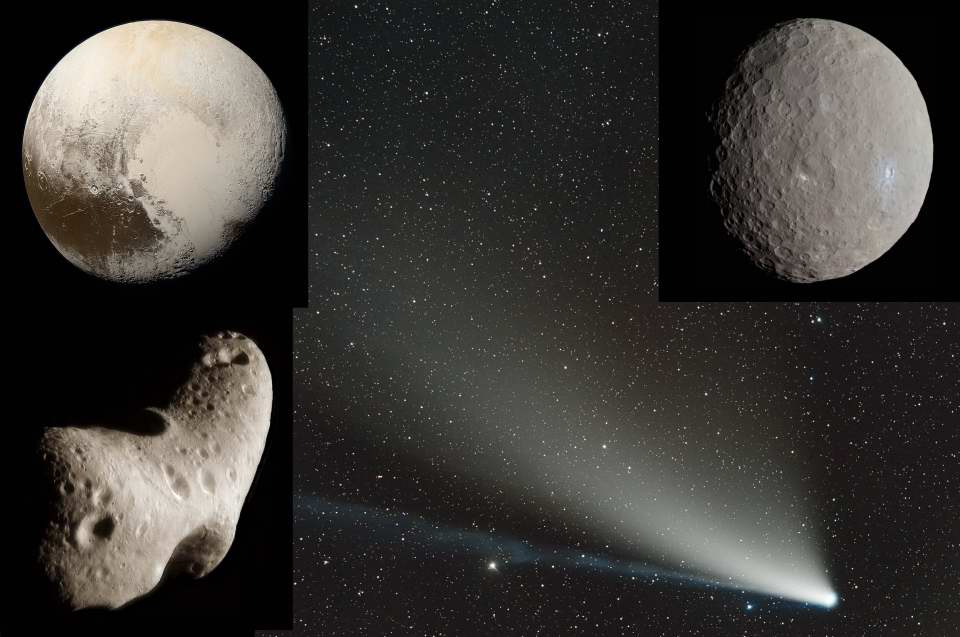Beginner's Guide
Solar System Overview
Sun, Moon, Planets and Meteors
When amateur astronomers are asked what got them into astronomy, the leading answer is seeing the moon in a telescope. Others will answer seeing Saturn and its rings or Jupiter and its moons in a telescope. Though the experience of viewing the moon is fairly universal, Jupiter and even Saturn are not. Some people are disappointed saying, "They're so tiny!" But a budding amateur astronomer will be awestruck by the view of them.
One great thing about observing the planets is that you don't need dark skies to enjoy the views. You don't need a location with few artificial lights and you don't need a moonless night. Venus, Jupiter, Saturn, Mars, and Mercury are the planets which are readily seen by the naked-eye and all of them at a casual glance look like stars. Their existence have been known through much of antiquity because their defining characteristic is that they don't stay in one position in the sky. In fact the name planet comes from the Greek and it means wanderer.
Expectations
At the Milwaukee Astronomical Society we show objects in our telescopes during our Open House nights. When we show Saturn our visitors express one of these two: 1) "I can see the ring!", or 2) "It's so small!" or "Why is it so small?" This second points are not really wrong, but small is a relative term. Yes, it's small if you're comparing it to the large images that you find in books or the internet. To give you a good idea about the size of the various planets, here is what those objects look like at 100X. Note: the sizes you see on your computer screen or phone are probably not correct. In order to get the proper sizing, click here or on the image and you can download a properly scaled PDF. When you print that document, the sizes are to a scale that you then see at 10 inches.
Classic Solar System Diagram
Odds are you've seen a diagram like the one above which we call a Simple Solar System Diagram. And though it does show the planets in order of distance from the Sun, it is horribly misleading. It gives an extremely distorted approximation for the distances of the planets to the Sun. It also doesn't give you an accurate size of the planets, either in comparison to the Sun or the other planets. But there is a reason and we'll get into the details next. And to do that we will need to shrink the size of the solar system down to a size that is easier to visualize. For this example we will start with a Sun that is just 24 inches in diameter.
Size of the Planets
During public demonstrations we use a 24 inch yellow exercise ball to present the Sun and have a display of balls of various sizes as you can see above. The last four are very small so the insert area shows a magnified view of that end of the display. Then we ask our audience to pick out the one that most closely matches the size of the Earth, going through them one by one and they vote by a show of hands. Not surprisingly they pick sizes that are much larger because the typical solar system diagram would lead anyone to that conclusion. So which one do you think is the Earth? To find out which one you can click/tap here or on the image above and you'll see the planets some of these objects represent. So in comparison to the Sun the planets are pretty small.
Distance of the Planets
At this point we now ask how far are the planets from the Sun, and specifically how far is Earth at this scale. Looking at the simple solar system diagram you could easily think it's only a few feet away. How far away would you imagine Earth would be? Mercury, the closest planet from the Sun is 81 feet away. Venus is 155 feet, and Earth is an incredible 215 feet away! The following table shows the largest solar system objects in descending order of size:
| Planet | Size | Distance |
|---|---|---|
| Jupiter | 2 2/5 inches | 1120 feet |
| Saturn | 2 inches | 2059 feet |
| Uranus | 1 1/8 inches | 4458 feet |
| Neptune | 1 1/8 inches | 1.23 miles |
| Earth | 1/5 inch | 215 feet |
| Venus | 1/5 inch | 155 feet |
| Mars | 1/8 inch | 329 feet |
| Mercury | 1/12 inch | 81 feet |
| Pluto | 1/25 inch | 1.61 miles |
| Eris | 1/25 inch | 2.76 miles |
You should be able to see that our solar system is quite large. But it's really much much larger. How far is the closest star, the Alpha Centauri star system? It's actual distance is 4.37 light years away. At the 24 inch Sun scale, Alpha Centauri is 11,000 miles away! So the size of the entire solar system is considered about half this distance or 5000 miles at this scale. Therefore, you can readily see why the stars in the sky appear as mere pinpoints of light, even in the largest telescopes.

How large does our 24-inch Sun appear at 215 feet? The answer can be obtained through simple trigonometry. The angle, mathematically here represented with the Greek letter θ (Theta), is given by the tangent of that angle:
tan θ = 2 / 215 ==> θ = arctan (2/215)
The arctan of 2/215 = 0.53°, so basically ½ degree. That 0.53° figure is exactly what we see in the sky on average.
A Better Solar System Diagram
Another typical shortcoming of Solar System diagrams is they don't snow all the objects, concentrating just on the planets. Consequently almost all of the newer diagrams do not show Pluto when its status was changed from planet to dwarf-planet in 2006. But the solar system is much more than just that. Our solar system also consists of moons, dwarf planets, asteroids, comets, and centaurs. The last three are referred to by the International Astronomical Union (IAU) as Small Solar System Bodies. How many objects are there in the solar system?
Planets: 8.
Dwarf Planets: 5.
Planetary Satellites: 209. This includes the satellites of Pluto and Eris.
Comets: 3727.
Asteroids and Centaurs: Over 1 million. This number is increasing all the time.
This diagram shows the 5 Dwarf Planets, two of the three asteroid belts, and mentions comets. We hope you can see why we call the earlier diagram "simple."
Astronomical Seeing
![Philipp Salzgeber [1], CC BY-SA 2.0 AT <https://creativecommons.org/licenses/by-sa/2.0/at/deed.en>, via Wikimedia Commons The Moon crater Clavius showing the effects of bad seeing.](../images/beginners/Seeing_Moon.gif) Once you see the Moon or planets at relatively high power you quickly get familiar with
the concept of astronomical seeing. The air in our atmosphere is in constant
motion. Sometimes it can be very calm while sometimes it's extremely
turbulent, and it can be everything between.
As you can see in the image of the moon crater Clavius the waves in the image which result in a loss of resolution. Adding more power only results in
making the image even fuzzier.
Once you see the Moon or planets at relatively high power you quickly get familiar with
the concept of astronomical seeing. The air in our atmosphere is in constant
motion. Sometimes it can be very calm while sometimes it's extremely
turbulent, and it can be everything between.
As you can see in the image of the moon crater Clavius the waves in the image which result in a loss of resolution. Adding more power only results in
making the image even fuzzier.
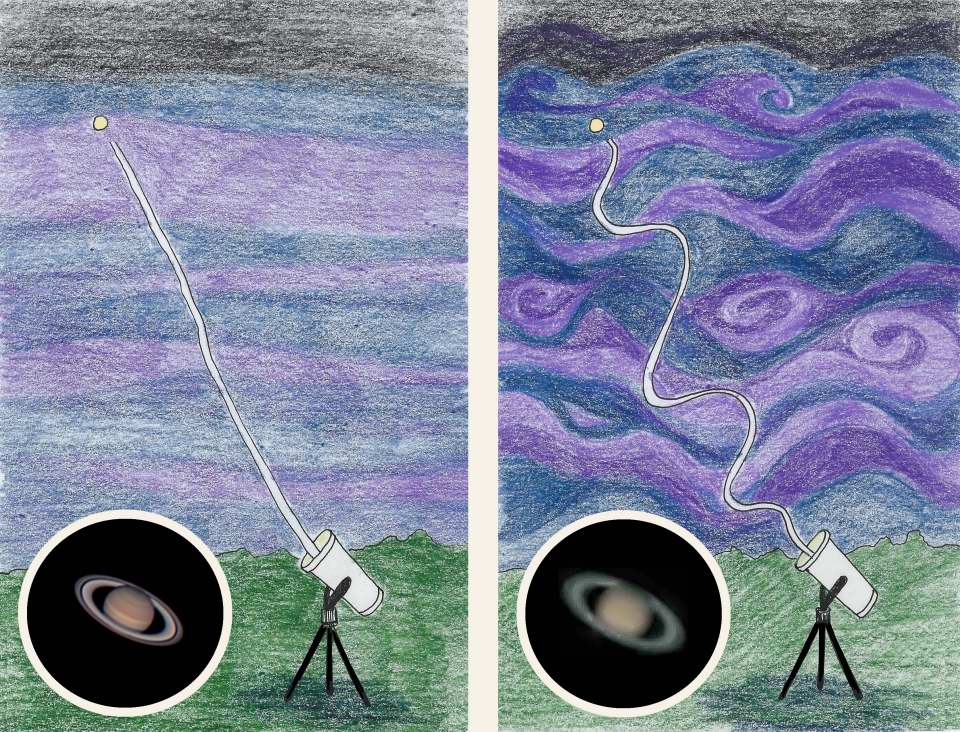 The
drawings at the left show how the movement of the air in the atmosphere
effects image quality. You cannot directly see this motion, but you can easily see the consequence. This bending of the light of a star
is what causes them to twinkle. Turbulence also has the effect of larger star images whereas
steadier air results in smaller star images. In this example you can see how it effects an image of Saturn.
The
drawings at the left show how the movement of the air in the atmosphere
effects image quality. You cannot directly see this motion, but you can easily see the consequence. This bending of the light of a star
is what causes them to twinkle. Turbulence also has the effect of larger star images whereas
steadier air results in smaller star images. In this example you can see how it effects an image of Saturn.
The seeing conditions often depends on the position of your object. When looking straight up you're basically looking through 10 miles of atmosphere. At 45° you're looking through 15 miles. And as you near the horizon that figure rises to over 100 miles. So obviously you want to view an object, especially the moon and planets, when they are higher in the sky.
We talked about patience before and lunar and planetary observing is where patience is rewarded. Seeing is almost never a constant. Even when things are really turbulent if you keep looking there will be these golden moments (sometimes just a fraction of a second) when there is more clarity and sometimes that clarity can be stunning.
Solar System Topics

